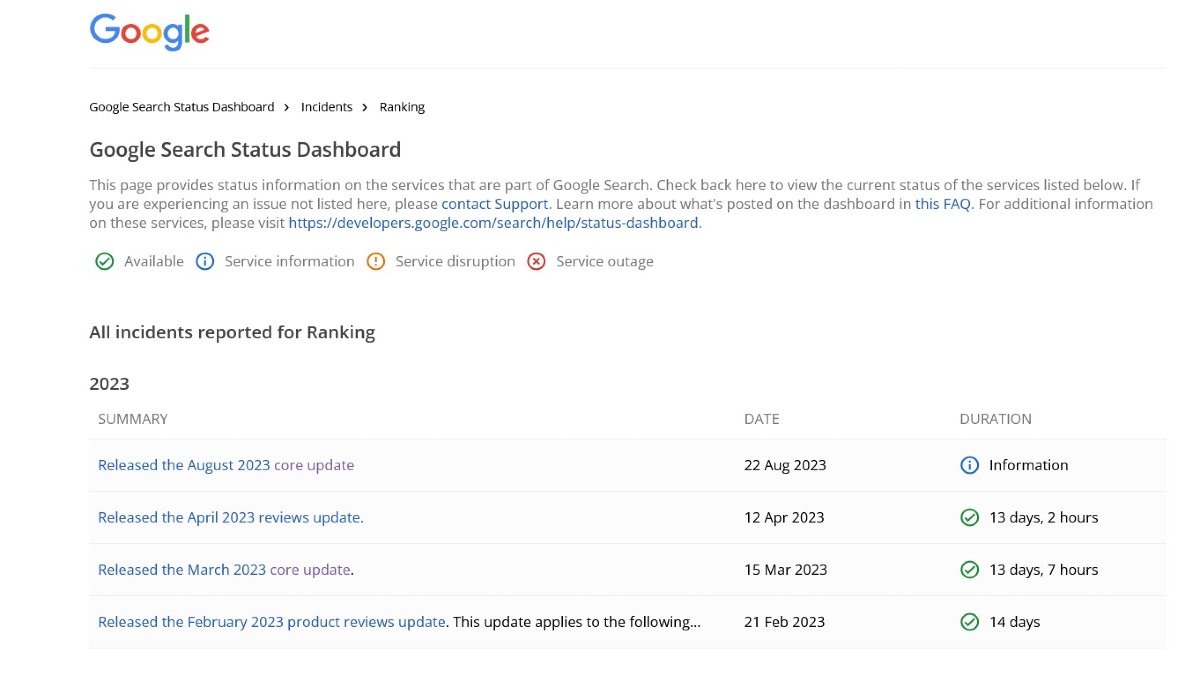Google’s August 2023 Core Update: What You Need to Know

In the ever-evolving landscape of search engine optimization (SEO), staying updated with Google’s algorithm changes is essential for maintaining and improving your website’s visibility. Google’s latest move, the August 2023 core update, has sent ripples through the digital realm, impacting search rankings and user experiences across the board.
Understanding Core Updates: A Quick Overview
Google’s core updates are major algorithm changes that aim to improve search results’ relevance and quality. These updates can significantly impact how websites are ranked in search engine results pages (SERPs). The August 2023 core update follows in the footsteps of previous updates, focusing on refining Google’s understanding of user intent and content quality.
Key Takeaways from the August 2023 Core Update
- User-Centric Approach: Google’s core updates consistently emphasize user experience. With this update, Google fine-tunes its algorithms to reward websites that provide valuable, user-centric content. If your website prioritizes user needs, addresses their queries, and offers valuable solutions, you’re likely to see positive outcomes.
- Content Relevance: The update places greater importance on content relevance and context. Google’s algorithms are now better equipped to identify the intent behind user queries, ensuring that the displayed results are closely aligned with what users are looking for. Crafting comprehensive, well-structured content that addresses a variety of related topics can help your site’s performance.
- Site Performance: Core updates also consider website performance factors such as loading speed, mobile-friendliness, and overall usability. A website that loads quickly and offers a seamless experience across devices is more likely to rank higher in SERPs.
- E-A-T Signals: Expertise, Authoritativeness, and Trustworthiness (E-A-T) remain crucial. Google continues to emphasize the importance of these factors in determining a website’s credibility. Showcase your expertise in your niche, highlight author credentials, and provide transparent, accurate information to build trust with your audience.
- Data and Metrics: After the update, it’s crucial to monitor your website’s performance using tools like Google Analytics and Search Console. Track changes in traffic, rankings, and user behavior to assess how the update has impacted your site.
Steps to Adapt to the August 2023 Core Update
- Content Audit: Review your existing content to ensure it meets the new standards of relevance and user intent. Update outdated information and expand on relevant topics to provide comprehensive insights.
- Optimize User Experience: Improve your website’s performance by optimizing page speed, enhancing mobile responsiveness, and ensuring easy navigation.
- Quality Over Quantity: Focus on creating high-quality, authoritative content that addresses users’ needs. Avoid thin content or keyword stuffing, as these practices can have a negative impact on rankings.
- Backlink Profile: Evaluate your backlink profile to ensure that your site is linked from credible sources. High-quality backlinks from authoritative websites can positively influence your site’s E-A-T signals.
- Engage with Users: Interact with your audience through comments, social media, and other channels. Building a community around your content can enhance user engagement and trust.
In conclusion, Google’s August 2023 core update underscores the importance of user-centric content, relevance, and website performance. Adapting to these changes by focusing on content quality, user experience, and E-A-T signals will contribute to your website’s long-term success in search rankings. Stay vigilant, monitor your site’s performance, and continue delivering value to your audience to navigate the dynamic world of SEO effectively.
